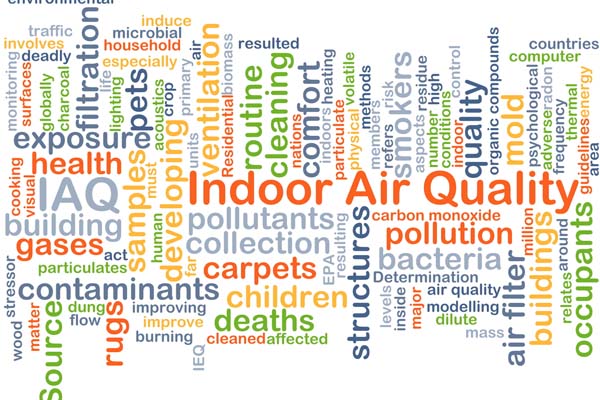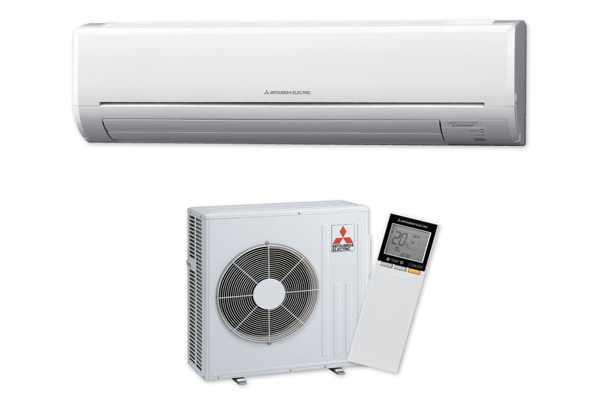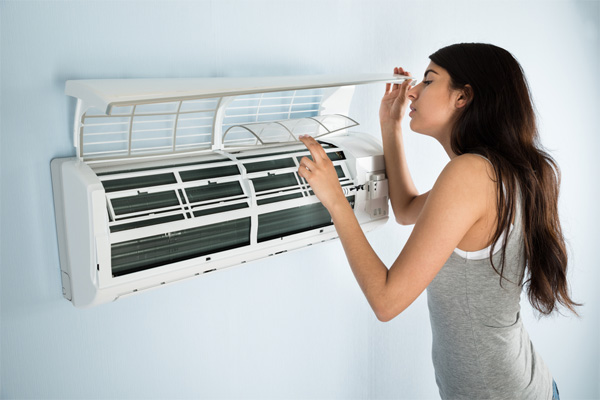Improve Indoor Air Quality With A Ductless Mini-Split System

According to the U.S. Environmental Protection Agency, indoor air quality in many homes, offices, and enclosed structures are likely to be ten times more polluted compared to outdoor air. Pollutants such as dust not only keep your home untidy, but they are also potential health risks. They lead to health issues such as allergies, asthma, and other respiratory conditions.
One of the easiest ways to improve the quality of indoor air is to use a ductless heating and cooling system, also known as the mini-split system. While a regular HVAC system delivers decent heating and cooling performance, ductless systems offer several benefits. One of these benefits includes better indoor air quality. Ductless systems, for example, are significantly better at reducing pollen and dust. They can also minimize numerous allergens and different particulates in an enclosed space.
What’s Lurking Inside Your Home?
Contents
Most homes have these common pollutants:
Secondhand Smoke
In households and enclosed spaces where people smoke, there are two victims – the active smoker and the passive smoker. The passive smoker, or the person who inhales secondhand smoke, is far more exposed to the toxins carried by burning tobacco. Smoke from a cigarette that floats into the air is mostly unfiltered. When the passive smoker inhales the smoke, they ingest far more particulates than the active smoker does. Secondhand cigarette smoke has been implicated as the leading cause of many diseases and disabilities. Some of which are even fatal.
Mold
Mold is a type of fungus that typically finds its way inside the home, where it significantly reduces indoor air quality. This fungus grows in damp places, which is why you can find them in areas of the home where there is excess moisture. Plumbing leaks, for example, make the environment ideal for mold growth. Areas that do not have sufficient ventilation or where ground moisture can penetrate allow mold to thrive.
Mold can be harmful to health, particularly among young children, the elderly, and people who have respiratory conditions such as asthma. It produces spores that are released into the air and inhaled. Some types of mold, like black mold, are notorious for increasing the risk of allergic reactions that could lead to skin rashes, sneezing, coughs, nausea, headaches, and dizziness.
Radon
Radon is a type of radioactive atomic gas that is invisible to the naked eye. It can be found under buildings and structures, and sometimes in building materials. If inhaled, radon can increase the risk of lung cancer. In fact, it has already caused deaths from the disease in the U.S. and Europe. Only a licensed technician can detect radon through a test performed.
VOCs (Volatile Organic Compounds)
VOCs are types of gases that are produced by certain solids or liquids. In general, VOCs are found in higher numbers indoors due to the emissions. They are produced by things commonly found inside the home, such as paints, lacquers, paint strippers, glues, cleaning supplies, correction fluids, permanent markers, and copiers.
Carbon Dioxide
Carbon dioxide is released each time we exhale. Due to our normal metabolic activity, we will continue to produce carbon dioxide, especially indoors. If there is insufficient ventilation, the level of CO2 will increase, affecting indoor air quality and causing drowsiness, low energy levels, and headaches.
Asbestos Fiber
Asbestos is a fire-retarding fiber that older houses and buildings commonly used before 1975. You can find asbestos in floor and ceiling tiles, taping muds, mastics, shingles, pipe wraps, and other types of insulation materials. When someone cuts, sands, or drills, these asbestos fibers release into the air where they can be inhaled. Asbestos causes severe health issues. These health problems include lung cancer, asbestosis, and mesothelioma.
Nitrogen Dioxide
Gas stoves that use natural or propane gas emit nitrogen dioxide. When nitrogen dioxide mixes with sunlight, it produces a gas called ozone, which affects the environment. Nitrogen dioxide gas in itself causes irritation if a person inhales it in high doses.
Bacteria
Bacteria is everywhere, so it is no surprise that they can be found indoors. Human skin is also home to several bacteria. Once the skin is shed, some of the bacteria may mix with indoor air. Numerous types of bacteria affect indoor air quality. Furthermore, they can range from harmless types to disease-causing varieties such as Staphylococcus aureus, Mycobacterium tuberculosis, and Streptococcus pneumonia.

The Importance Of Indoor Air Quality
On average, people spend several hours indoors. In some areas, most people even prefer to stay most of the time indoors. As such, they are more likely to be exposed to indoor pollutants. However, this affects their comfort and overall health. By improving indoor air quality, you will enjoy a better quality of life regardless of the length of time you spend indoors.
Here’s how indoor air quality helps create a more comfortable home and environment.
Improved Health And Well-Being
If the indoor air quality is poor, exposure to pollutants inside the home can have adverse side effects on one’s health. Contaminants present in the air can cause allergic reactions, coughing, sneezing, eye irritation, dizziness, nausea, and headaches. Prolonged exposure to high levels of pollutants can also lead to skin allergies and severe respiratory diseases.
If you or a family member has been suffering from a case of sniffles, even in good weather, your home may have poor indoor air quality. Fortunately, it is possible to improve IAQ. By merely taking steps to reduce indoor air pollutants will help remove harmful particulates from the air and allow you to enjoy better health and well-being.
Improve Cognitive Functions
According to Harvard’s Center for Health and Global Environment, indoor air quality has a significant impact on the cognitive functioning of building occupants. People who work in an enclosed space with enhanced indoor air quality were found to perform 172% to 299% better compared to those who worked in the average environment.
This only shows that good to excellent indoor air quality is beneficial to cognitive functions, something that business owners and company managers should seriously consider. By improving indoor air quality in the workplace, business owners and managers can significantly increase workers’ performance and boost their bottom line.
Fresh Air
Each time you cook or forget to clean up inside your home, there will be some sort of unpleasant smell indoors. The easiest way to fix this is to open the windows to allow fresh air in but this will depend largely on where you live and the type of weather you currently have.
Bad odors are unwelcome in every home and especially annoying for people with a sensitive sense of smell. Improving indoor air quality ensures clean and fresh-smelling air, and a more comfortable, relaxing environment.

Can Ductless Mini-Split Systems Improve Indoor Air Quality?
Your best option to enjoy excellent indoor air quality is installing a ductless HVAC system. A ductless mini-split system plays a dual function: keeping a comfortable temperature indoors regardless of the season and ensuring your health and safety inside your home. Here are ways a ductless HVAC system can improve indoor air quality.
Multi-Stage Filtration
Ductless mini-split systems have advanced multi-stage air filters that can trap tiny airborne contaminants. Small particles like pollen, dander, and mites often trigger allergies, worsen respiratory conditions, and cause a number of illnesses. A ductless mini-split system works behind the scenes to eliminate airborne contaminants and major allergens to keep indoor air safe. Some ductless HVAC models even claim that they can eliminate as much as 99.9% of indoor air pollutants.
Absence Of Ductwork
Ducted systems require a network of bulky ducts to deliver air throughout the house. The problem with these ducts is that they tend to collect dust, insect droppings, VOCs, and bacteria over time. When the system pushes conditioned air through the ductwork, it stirs up the particulates which mix with the air that the HVAC system distributes into the rooms.
Ductwork also leaks. According to Energy Star, as much as 30% of homes in the U.S. have ductwork leaks. These leaks not only lead to energy loss, but they also cause a spike in your energy bills.
A ductless system, on the other hand, lets you enjoy conditioned air that is cooled or heated directly by the unit. The air you breathe no longer needs to pass through ductwork that is polluted by harmful contaminants.
Humidity Control
Ductless systems are quite effective in controlling humidity. The refrigerant in the system absorbs indoor heat, leaving cool air inside your home. Cool air does not hold moisture well. Whatever moisture is present in the air, the HVAC system absorbs it and undergoes the condensation process, turning it to liquid. It is then eliminated via the drain line.
Ductless mini-splits control humidity using its inverter technology. Unlike traditional systems, ductless systems are capable of slower and longer operational times. These systems can maintain the perfect temperature simply by adjusting the output. As a result, it effectively eliminates indoor humidity, allowing you to control and reduce moisture inside your home.
Keep Pests Out
To install a ductless mini-split system, the HVAC technician simply has to drill a small hole through which the conduit that connects the indoor and outdoor units. Ductless systems are far more secure. Due to the size of the hole, even tiny creatures and insects cannot use it as an entry into your home.

Conclusion
Never underestimate the importance of ensuring indoor air quality for your living and working space. With a ductless mini-split system, you have better control of your indoor environment and enjoy a more comfortable, energy-efficient, and safer home. Call your licensed HVAC contractor to help you make the right choice today.
Check Out One Of Our Ductless Installation Projects
Call R. F. Ohl For All Of Your HVAC Requirements
To get reliable and high-quality HVAC solutions from a trusted HVAC service company, contact R.F. Ohl now. We provide honest prices on truly expert HVAC solutions. If you have an interest in installing a mini-split ductless HVAC system in your home, call us now. We have a team of NATE-certified technicians with the training and knowledge for locating the ideal ductless setup for your property.
There are many home comfort services that we currently supply, including furnace repairs, HVAC system tune-ups, and much, much more. Better yet, every one of your HVAC experts is polite and friendly.
We’re committed to making sure visits with us are always pleasant. Get your free consultation today. Contact R.F. Ohl right away!
Click here to contact us today or give us a call at (610) 377-1098 if you have any questions.
